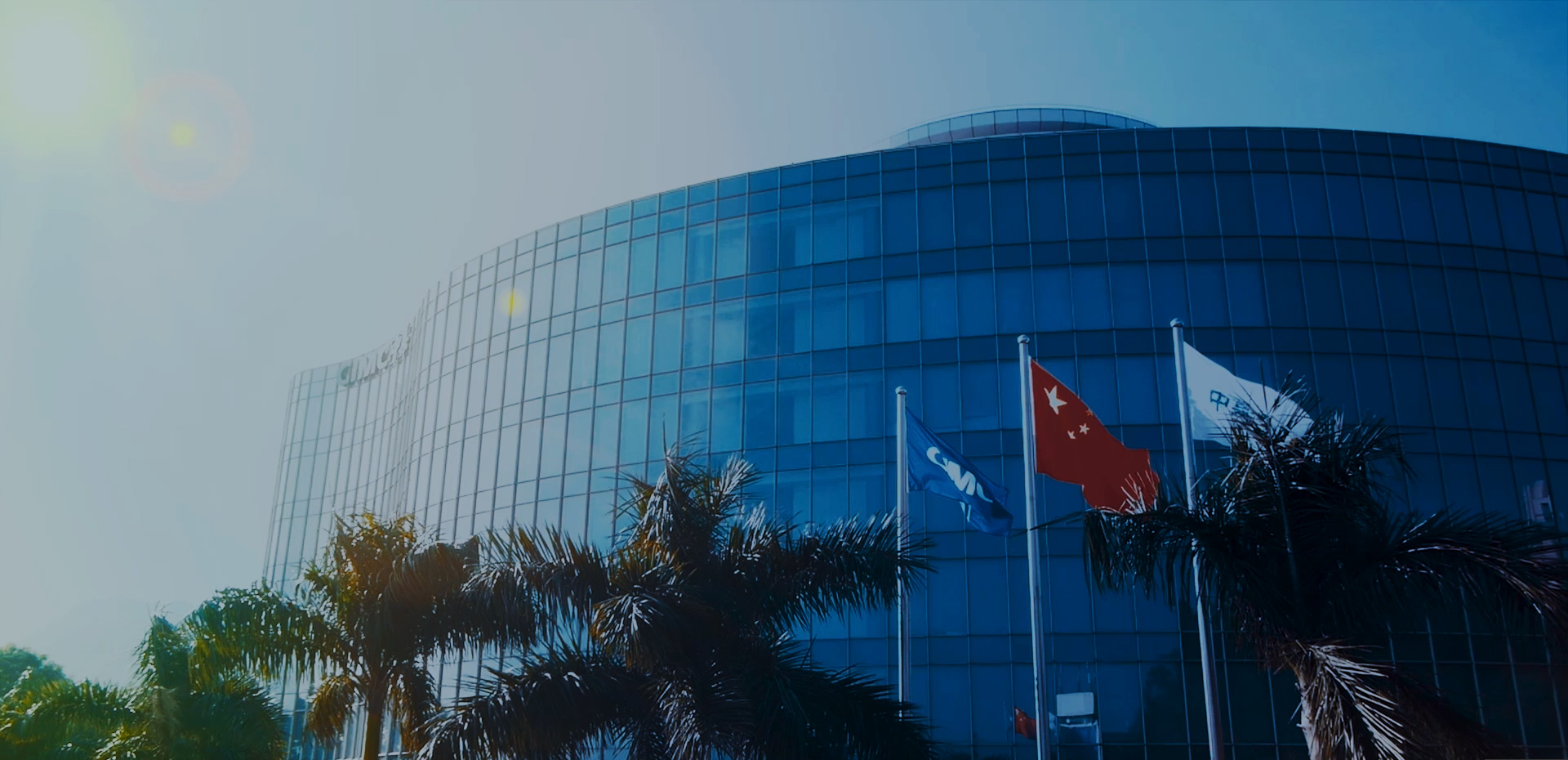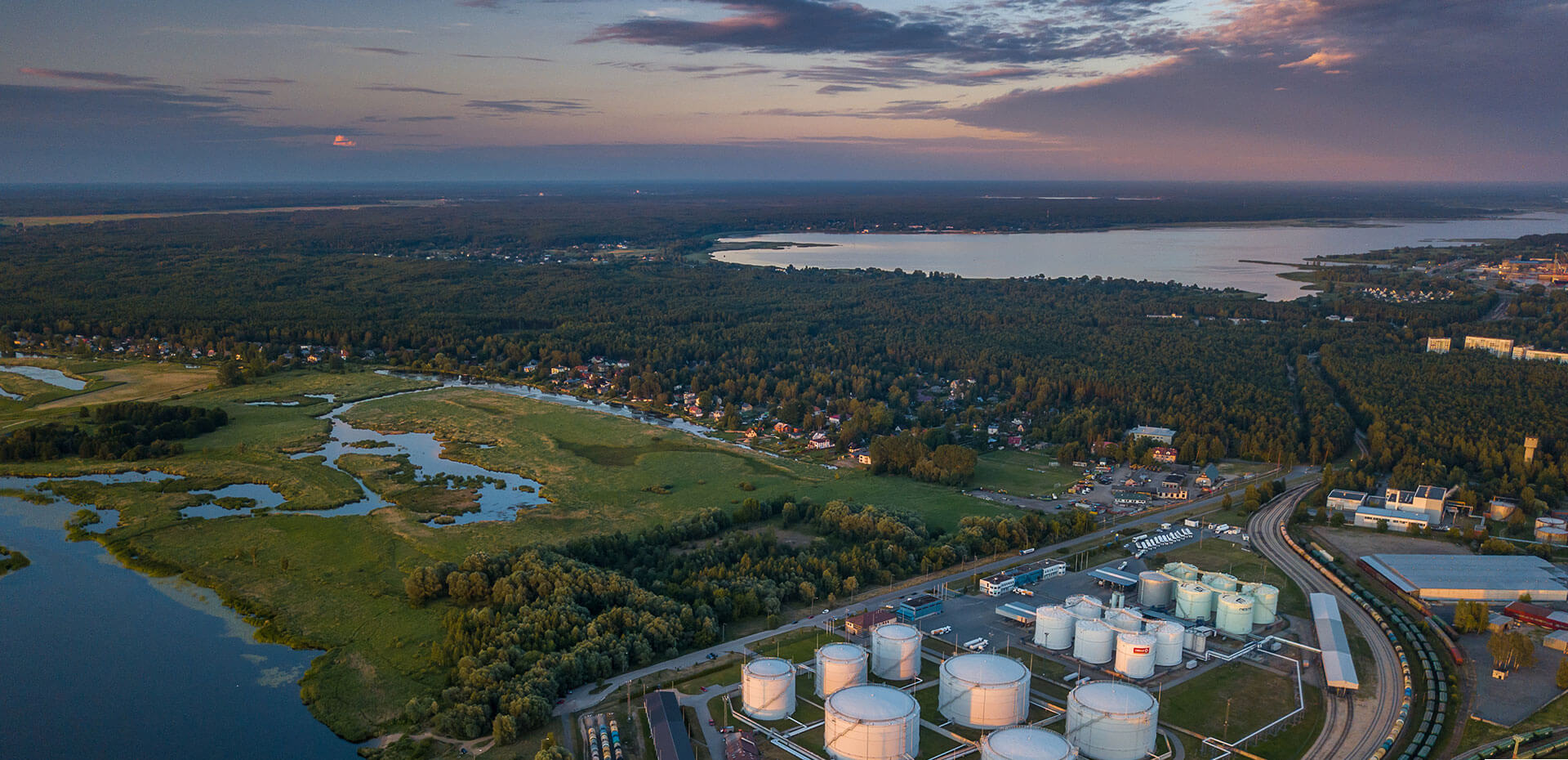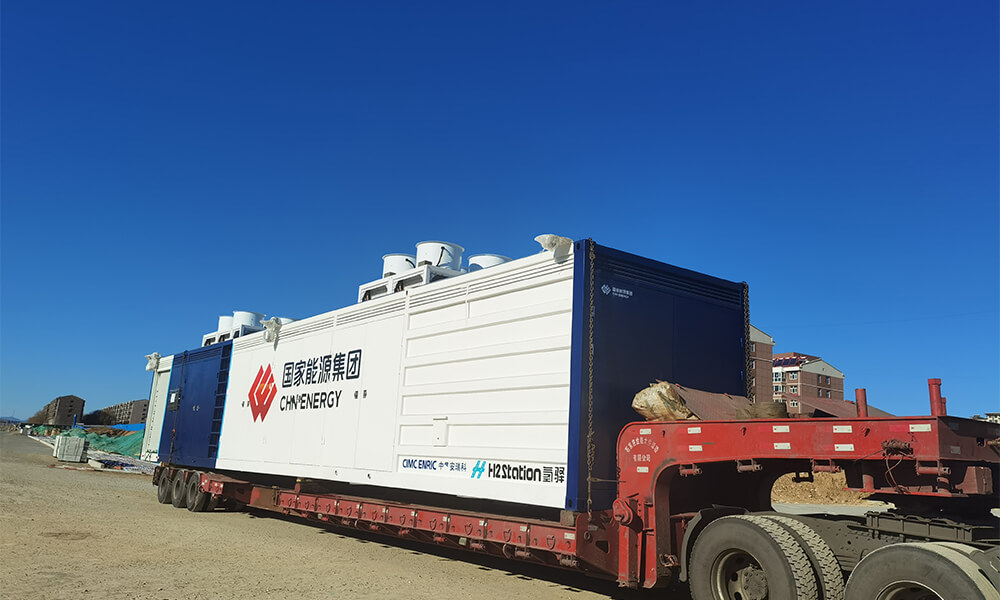(Hong Kong, August 3, 2021) – CIMC Enric Holdings Limited (and its subsidiaries, collectively referred to as "CIMC Enric" or the "Group", SEHK: 3899.HK) is pleased to announce today that its subsidiary, Nantong CIMC Sinopacific Offshore & Engineering Co., Ltd ("CIMC SOE") has acquired the assets of Qidong Fengshun Ship Heavy Industry Co., Ltd ("Fengshun Ship Assets"). The acquisition will enable the Group to secure the scarce resources of shipyards and shoreline terminals, enhance the Group's layout in the offshore clean energy industry chain, and consolidate and expand the Group's scale and cost advantages as well as its position of a leading player in offshore clean energy equipment manufacturing and engineering.
The acquired assets of Fengshun Ship are located in Qidong City, Jiangsu Province. CIMC SOE had leased its facilities and successfully manufactured five LNG carriers there. The target assets were publicly auctioned on the platform of "Alibaba Auction · Assets". The Group participated in the third round of auction and successfully bid for the assets at RMB 529 million. Among the assets, the plant occupies an area of about 1,123 mu (about 0.75 square kilometres) and a shoreline length of over 700 metres along the Yangtze River, with a 70,000-ton shipyard, two 50,000-ton berths, a 70,000-ton outfitting terminal, a material terminal, and three production lines with an annual capacity of 2.5 million DWT.
With the implementation of the Yangtze River protection strategy in recent years, a lot of old terminals and shoreline resources have been shut down and vacated, and the existing terminals and shoreline resources along the Yangtze River have become scarce resources. With the bankruptcy and industrial consolidation of shipbuilders in recent years, alongside the tightened approval process and enforcement of policies related to environmental protection, China’s shipyard resources have become increasingly tense. According to the China Shipbuilding Yearbook, in 2018, there are a total of 89 shipyards with a capacity of over 10,000 tons (30 of them belonged to China State Shipbuilding Corporation), of which there were only 36 shipyards with capacity of 10,000 to 90,000-tons.
CIMC SOE used to operate in a light asset mode by outsourcing its hull construction business. As the shipyards become a sought-after resource, the possession of private shipyards is crucial to a shipbuilder's future development. Self-owned shipyards could make up for the shortage of hull production capacity during the peak order periods, reduce the overall shipbuilding cost, and improve delivery guarantee capability, the trust of shipowners, and the market competitiveness. The asset acquisition has laid a solid foundation for the Group to enhance its overall construction and delivery capabilities of building liquefied gas carriers, LNG bunkering vessels, LNG-powered ships, on-board LNG fuel tanks, and offshore wind power equipment.
The offshore clean energy industry chain has bright prospects. On 26 December 2020, China implemented the Yangtze River Protection Law. The “Gasification of the Yangtze River” and “Gasification of China's inland waterways” initiatives will development rapidly. At present, there are approximately 112,000 transport ships on the arteries of the Yangtze River, of which 24,700 ships can be transformed into LNG-powered ships with over 300 gross tons and aged below 15 years. Besides, there are approximately 123,000 inland transport ships on the shipping arteries of the Xijiang Main River and the Beijing-Hangzhou Canal.
Compared with Japan and Northern Europe where small LNG carriers are active, China has a vaster territory with a longer coastline and denser inland waterway network. Therefore, the small-to-medium sized LNG carriers mainly used for two-way transshipment between large LNG import receiving stations and satellite stations have great potential in China's LNG transportation domestic market. According to the “National Plan for Distribution of Coastal and Inland Waterway LNG Terminals (2035)”, 6 LNG inland waterway receiving terminals will be built in China, requiring over 15 units of LNG distribution vessels with capacity of 30,000m³ each, which is favorable to the market of small-to-medium sized LNG carriers. The Yangtze River Administration of Navigational Affairs of the PRC Ministry of Transport recently announced that LNG powered ships will have priority in passing the Three Gorges Dam Ship Lock over similar type of ships, with effect from 1 June 2021. The acquisition will enable the Group to be well prepared for the rapidly growing market of LNG carriers and LNG powered ships (newly build and converted).
Mr. Yang Xiaohu, Executive Director and General Manager of CIMC Enric, said: " Fengshun Ship Assets include relatively better production facilities and a superior geographical location in the Yangtze River Economic Belt. The acquisition is a significant movement for the Group to grasp the future development opportunities in the offshore clean energy industry chain in China and around the world by purchasing core assets such as shipyards and berths along the Yangtze River. As the LNG terminal project extends to inland waterways, the shipping market demand for small-to-medium sized LNG-powered ships will boom due to the restrictions on the size of receiving terminals as well as navigation conditions. On the other hand, with the gradual advancement of the International Maritime Organization (IMO) sulphur restriction and gasification inland rivers, the pressure of energy saving and emission reduction on the shipping industry has soared. At present, most shipowners have adopted LNG fuel as the main way to comply with the IMO's sulphur emission policy. Upon completion of the acquisition, the Group will carry out production line automation transformation, vigorously promote lean production, improve the informatisation and intelligentisation standards of equipment construction, and gradually promote the upgrade of intelligent manufacturing, building it into CIMC Enric's industrial base for offshore clean energy equipment manufacturing."















